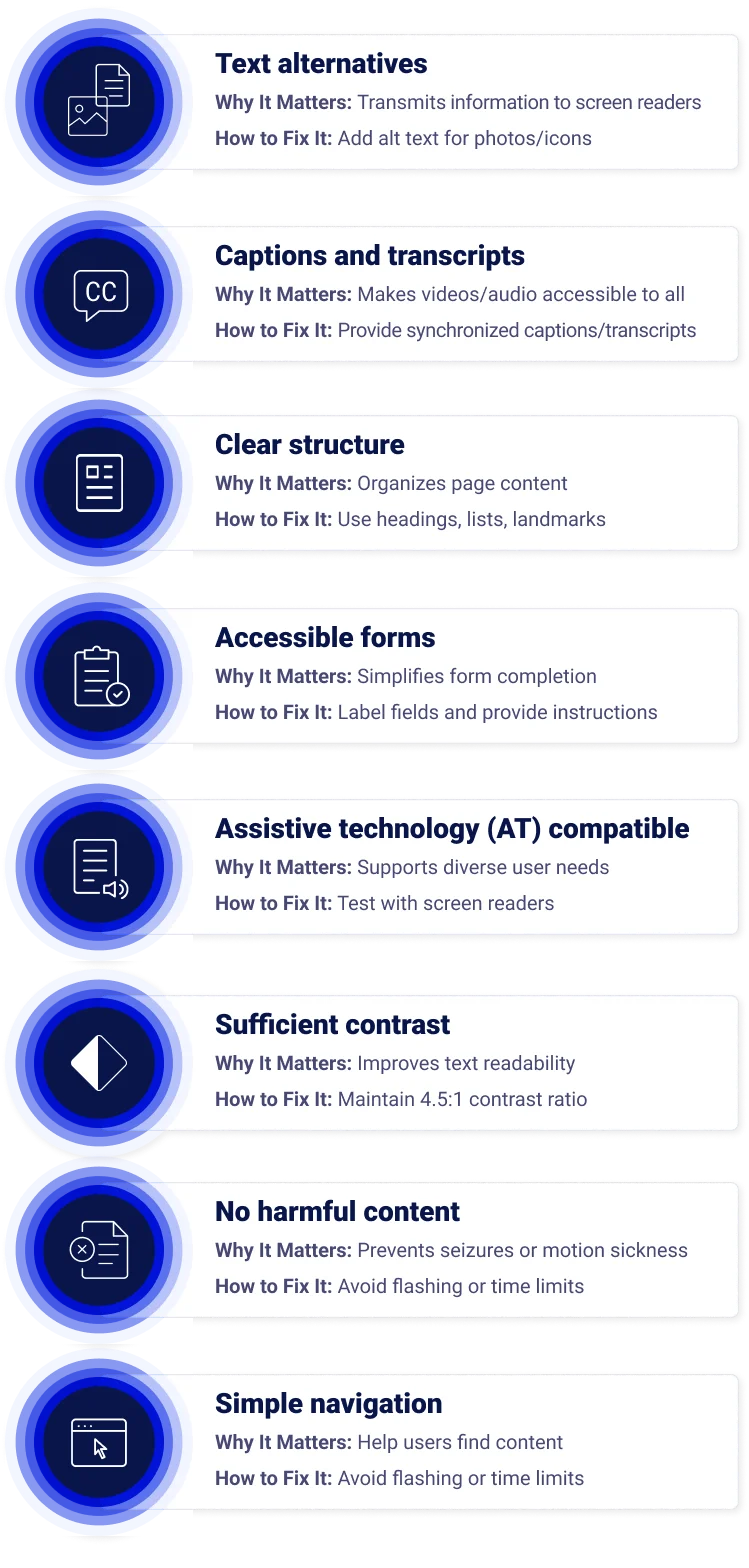How to Navigate Section 508 Compliance 2025 (Part 2): Website Checklist
In 2017, the U.S. Access Board published the Revised Section 508 Standards, which became enforceable in 2018. These revisions brought Section 508 in line with WCAG 2.0 Level AA, reflecting advances in technology and global accessibility practices.
Today, in 2025, these revised standards remain the active framework. They expand responsibilities beyond federal agencies to include contractors and vendors that provide electronic and information technology to the government. This has made Section 508 a de facto requirement for many businesses working in federal or federally funded sectors.
To be kept in mind is the fact that, at this time, the most current version of the WCAG is version 2.2, which removes one of the success criteria in previous versions, and adds nine new ones instead. We have discussed this in a previous blog post.
##Key updates in the Revised 508 Standard
The Revised Standard consolidated requirements into a more consistent, testable format:
- WCAG 2.0 alignment: All covered content, including websites, applications, and documents, must meet WCAG 2.0 Level AA.
- Functional performance criteria: Obligations apply to users with vision, hearing, speech, mobility, and cognitive limitations.
- Expanded scope: Coverage includes software, hardware, websites, documents, and multimedia.
- Equivalent facilitation: Businesses can implement alternative designs as long as they provide equal or better access.
- Safe harbor provision: Legacy content that was compliant before 2018 is not required to be retrofitted, unless altered.
Revised 508 Website Checklist
Key obligations include:
- Text alternatives for images, icons, and multimedia.
- Captions and transcripts for audio and video.
- Pages structured with headings, lists, and landmarks for easy navigation.
- Forms that are accessible with labels, instructions, and error handling.
- Compatibility with assistive technologies such as screen readers.
- Color contrast ratios that meet WCAG 2.0 Level AA.
- Avoidance of time limits or flashing content that may cause harm.
- Consistent navigation and clear focus indicators.
For businesses, this means ongoing monitoring of websites and applications, training staff on accessibility practices, and maintaining records of updates.
Here is a Section 508 compliance checklist

How Clym can help
Clym’s Accessibility Widget supports businesses by integrating accessibility features directly into websites. With preconfigured profiles, customization options, and ongoing updates, it reduces the manual burden of meeting Revised Section 508 requirements.
By automating adjustments such as contrast, text resizing, and navigation aids, the Widget helps businesses align with accessibility expectations while focusing internal resources on their core work.
Explore Clym’s Accessibility Widget or see Clym in action by booking a demo or reaching out to us to discuss your specific needs today.